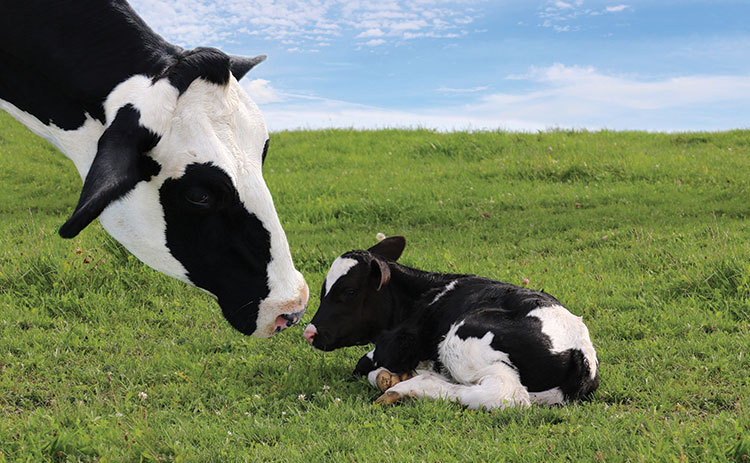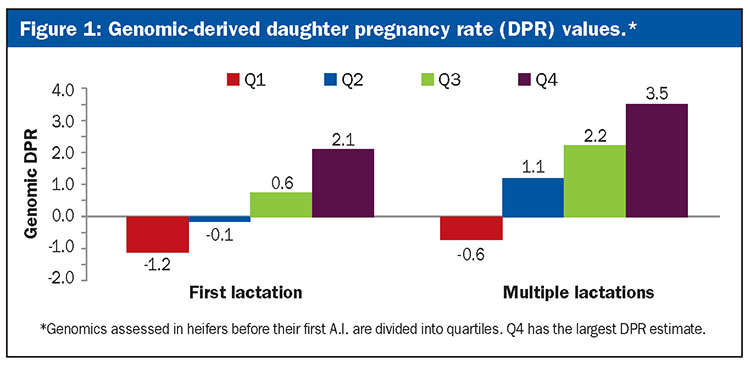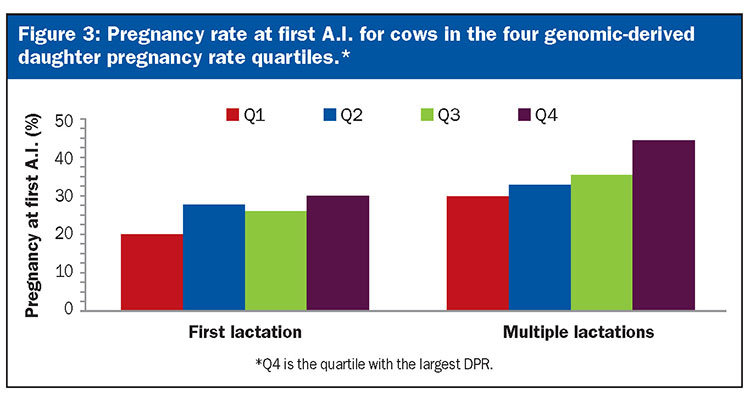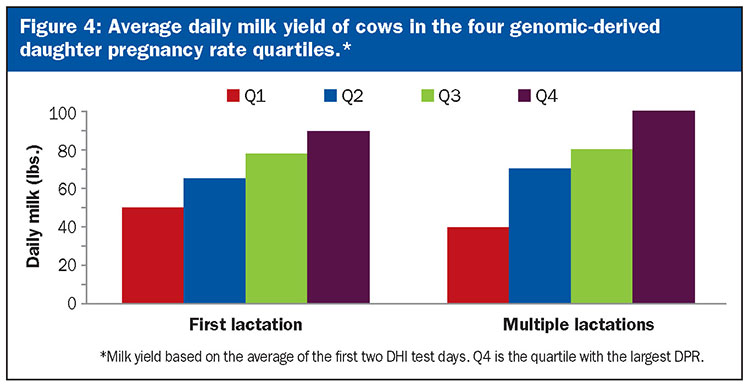
If there are any skeptics that do not believe in the power of genetic selection, then they have been ignoring the facts. The magical history of genetic selection has translated into more milk per cow among other traits.
In Kansas, our dairy cow population peaked at 892,000 cows in 1934 when average milk production was 3,630 pounds per cow. By the end of 2018, with approximately 159,000 dairy cows, our per cow average was 23,321 pounds. In 2018, we produced more milk (3.7 billion pounds) than we did in 1934 (3.2 billion pounds in 1934) with only 18% of the cows. That is phenomenal growth and efficiency!
How did that all happen?
It was the result of transmitting the genetically superior genes of top A.I. breeding sires identified by the DHI records of their milking daughters. In other words, those progeny-tested young sire programs provided the scientific data and proofs that gave dairy producers the choice of the elite sires available by A.I. breeding.
Daughter pregnancy rate
Let’s fast-forward . . . genomic data are available for nearly every A.I. sire, including a number of reproductive traits such as daughter pregnancy rate (DPR). Genetic evaluations for DPR allow the measurement of genetic differences among sires for the fertility of their daughters.
DPR is defined as the percentage of nonpregnant cows that become pregnant during each 21-day period. A DPR of “+1.0” implies that daughters from this bull are 1% more likely to become pregnant compared with daughters of another bull with a DPR of “0.0.”
DPR is derived from days open records, or the interval from calving to conception. Daughters of a sire with a +1.0 DPR are expected to conceive four days earlier, on average, than daughters of a sire with a +0.0 DPR. The range in DPR typically runs from approximately -3.0 to +3.0. This equates to a difference of more than three weeks in days open.
Recent performance study
A recently published report of 3,044 first-lactation Holstein cows from four farms and 1,401 multiple-lactation cows from three of the four farms evaluated the association between the genomic DPR estimates and various reproductive traits.

All cows were genotyped between 2010 and 2015 before their first A.I. breeding as heifers. Figure 1 shows the actual DPR values categorized into quartiles. The quartiles (Q) were separated into the bottom 25% (Q1), the next highest 25% (Q2), the next highest 25% (Q3), and the top 25% (Q4).
Reproductive traits

Results were summarized by quartiles and lactation group. For first-lactation cows, the predicted difference in days open should average more than 13 days and more than 16 days for multiparous cows. Figure 2 shows that actual differences in days open by lactation group, which ranged from more than nine days for first-lactation cows and 12 days for older cows (Q1 to Q4).

Figure 3 shows the differences in pregnancy rate at first A.I. breeding. As with days open, cows having the largest DPR values (Q4) were more fertile than the cows in the bottom quartile (Q1) in both lactation groups.
Milk yield
It is also exciting that milk yields (average of the first two DHI test days) of cows in the top quartile (Q4) were superior to cows in the lower quartiles, regardless of lactation group (Figure 4).

We know from classic animal breeding that when selection emphasis is based on only one trait, genetic progress will occur at a much faster rate than when selection emphasis is made on multiple traits. When both milk yield and reproductive performance are better for cows in the top quartile DPR estimates, we can take our cake and eat it, too! It is a win-win situation.
In summary, the cows with the highest quartile (Q4) for genomic DPR had fewer days to first A.I. breeding, greater pregnancy at first service, fewer services per pregnancy, fewer days open, and more were pregnant at the end of lactation.
It seems that the genomic DPR can be used as a predictor of future reproductive performance. It also reaffirms the potential benefits of applying early genomic predictions for making accurate early selection decisions. Happy A.I. breeding!










